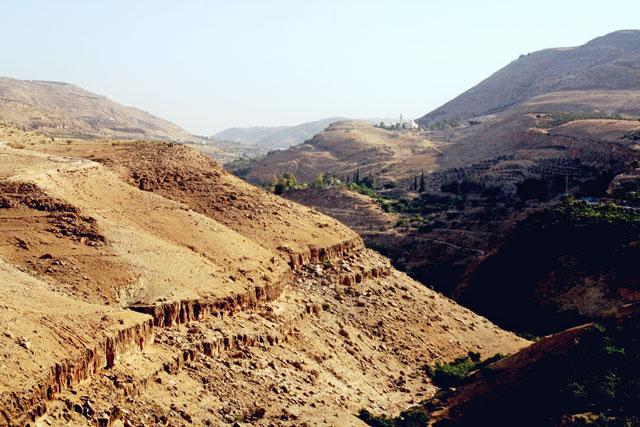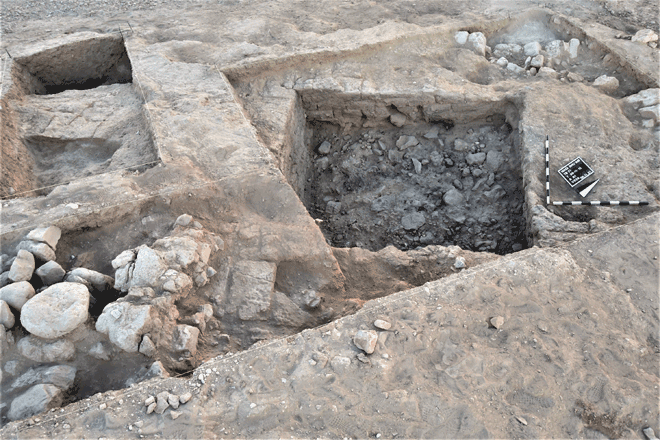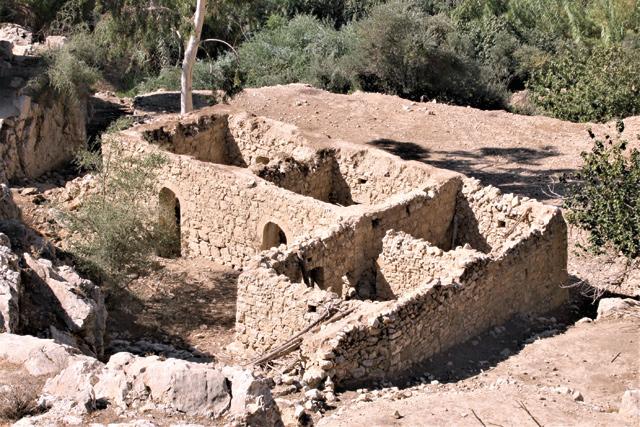You are here
German team presents Wadi Shu’aib archaeological findings
By Saeb Rawashdeh - Oct 18,2017 - Last updated at Oct 18,2017

Alexander Ahrens
AMMAN — The results of the Wadi Shu’aib Archaeological Survey Project (WSAS) were presented on Sunday, during a lecture by project director Alexander Ahrens under the title “WSAS: From the Jordan Valley Lowlands to Transjordanian Highlands”.
Initiated in 2016, WSAS has continued through 2017, according to the German scholar, who noted that the survey was carried out in the region of the Wadi Shu’aib, stretching from the town of Al Salt in the northwest to the Jordan Valley (Shuna) in the southwest of central Jordan.
The two survey campaigns aimed to list archaeological sites, most of which were unknown until now, while others were already discovered but never documented thoroughly, Ahrens said at the event at the German Protestant Institute of Archaeology.
“In 2017, test excavations were conducted at the site of Tell Bleibil at the mouth of the Jordan Valley, aiming to implement a comprehensive soil sampling for macro-botanical analysis and radiocarbon dating of this important site,” said the researcher.
The site was known as an important archaeological location since the 1920s, but has never been the focus of archaeological excavations thus far, he continued, underlying that the ancient settlement of Tell Bleibil guarded the entrance to the Wadi Shu’aib and therefore controlled the traffic going in and out of the wadi.
“The survey highlights the importance of the region between Al Salt and the Jordan Valley as a transit location between these regions and the aim of the survey in future campaigns is to record all archaeological sites in this micro region connecting the fertile Jordan Valley with the Transjordanian Highlands,” Arhens noted.
Regarding the occupation and historical references of these sites, the German expert explained: “Tell Bleibil was a fortified settlement during the Iron Age, but we don´t know yet if this was also the case in the Bronze Age. Meanwhile, Wadi Shu’aib is perhaps mentioned in the Old Testament as the‘Waters of Nimrin‘, but that is not confirmed. Tell Bleibil is sometimes identified with the biblical site of ‘Beth-Nimrah‘, but that is also not verified.”
“There is an abundance of Iron Age pottery at Tell Bleibil at the entrance of the Wadi Shu’aib. We can also find some at some sites in the wadi up to Al Salt, which was also settled at least from the Bronze Age,” Arhens added.
The entire wadi connected the Jordan Valley with the Highlands of Jordan and Tell Bleibil which secured the entry into the wadi from the Jordan Valley during the Bronze and Iron Ages, according to the archaeologist.
“Of course, Hellenistic, Roman, Byzantine, and Islamic pottery was also found at many sites in the wadi, attesting to the rich cultural heritage of the entire wadi system. Moreover, the important location named after the wadi itself [the Wadi Shu’aib neolithic site] is also well-known,“Arhens underlined
Arhens said that the WSAS team plans to excavate Tell Bleibil and continue its project in 2018, while maintaining their survey inside the wadi, since “there are still many more sites to be discovered”.
Related Articles
AMMAN — The Jordan Valley and the Transjordanian Highlands are two distinctive regions, however material culture found in the two areas poin
AMMAN — After a pandemic-induced break in active field work in 2020, archaeological work in Jordan’s Wadi Shuaib resumed in 2021, said Alexa
AMMAN — The northwestern town of Salt, nestled between the West Bank and Wadi Shuaib, was a strategic point during the late Ottoman period,

















